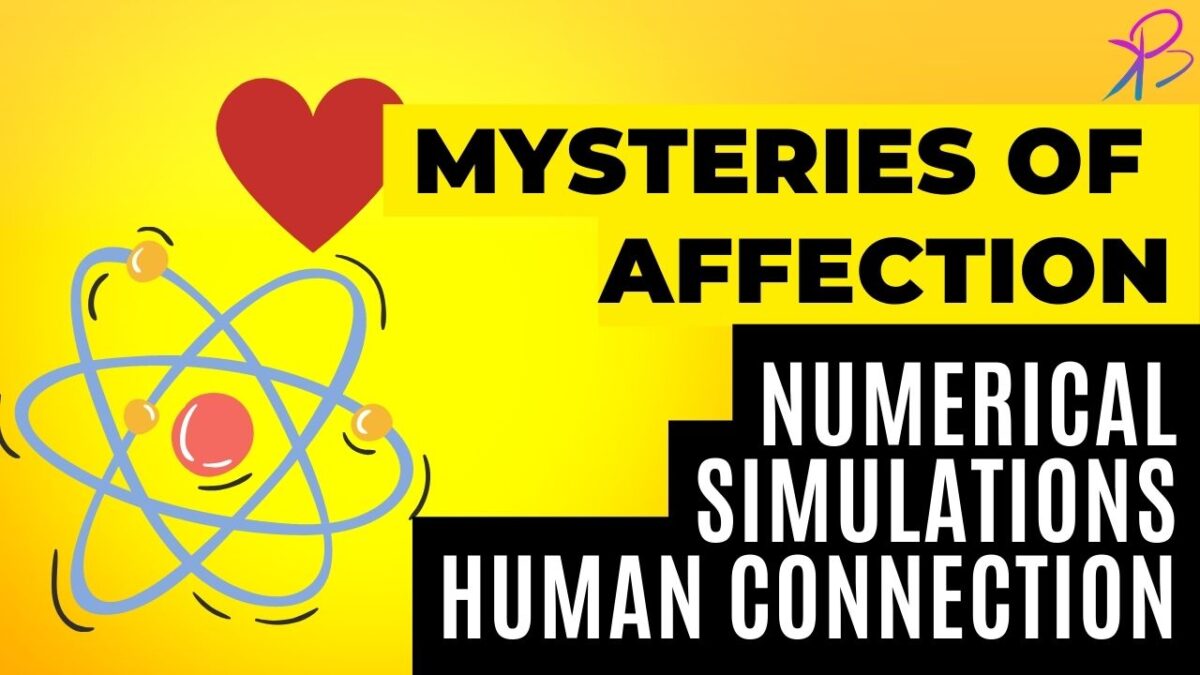Journey into the heart of human connection as we explore the 'Physics of Love'. Discover how numerical simulations illuminate the scientific facets of our most profound emotions.
Introduction

Welcome to an investigation that walks the fine line between the material and immaterial, reason and emotion. Today, we'll go deeply into "The Physics of Love: How Numerical Simulations Explain the Science Underlying Human Bonding," a fascinating topic. Doesn't that seem like a mouthful? But I assure you that it's very intriguing. So let's take this leap of faith together while holding on to our hats!
The Physics of Love: How Numerical Simulations Reveal the Science Behind Human Connection
The Science Behind Love: More Than Just Butterflies

We all know that love isn’t just about heart-shaped candies and red roses. It's a complex emotion that can make us feel like we're walking on air one minute and in the depths of despair the next. But what if I told you that there's a scientific explanation behind all those crazy feelings? That's where the physics of love comes in.

From Einstein to E-Harmony: The Role of Physics in Love
Love, at its core, is about connections—between atoms, molecules, and people. Just as physics explores the fundamental forces that hold the universe together, it can also shed light on the ties that bind us in love.
Numerical Simulations: A New Lens to View Love
Numerical simulations aren't just for predicting weather patterns or stock market trends. They're now being used to unravel the complexities of love. By simulating the various scenarios that can occur in human relationships, scientists can explore the underpinnings of love in a new and exciting way.
Love under the Microscope: Simulating the Physics of Attraction
Creating a Model of Love
To study love, scientists first needed to create a model that could encapsulate its complexities. This model had to account for the individual quirks and idiosyncrasies that make each relationship unique.
Simulating Scenarios of Love
Once the model was created, numerical simulations were run to test various scenarios. These simulations examined everything from the effects of initial attraction to the long-term impact of compatibility.
Drawing Conclusions from Love’s Simulations
The simulations provided some surprising insights into the mechanics of love. For instance, they revealed that compatibility is more important than initial attraction for long-term relationship success.
The Revelations of Love's Numerical Simulations
Finding 'The One': The Role of Probability in Love
One of the most surprising findings from the simulations was the role of probability in finding "the one." Turns out, finding your perfect match might be less about fate and more about statistical likelihood.
Love's Turbulent Journey: Chaos Theory and Relationships
Chaos theory, with its emphasis on unpredictable behavior and sensitivity to initial conditions, provides a fascinating lens through which to view love. The simulations revealed that even small changes can lead to drastic shifts in a relationship's trajectory.
The Gravity of Love: How Attraction Holds Us Together
Just as gravity pulls celestial bodies towards each other, attraction pulls us towards our loved ones. The simulations shed light on how this attraction can wax and wane over time, much like the gravitational pull between planets.
FAQs: Delving Deeper into the Physics of Love
- How can physics be applied to love? The application of physics to love lies in the concept of connections — between atoms, molecules, and, in this case, people. The fundamental forces explored in physics can offer insights into the bonds that create and sustain love.
- What do numerical simulations reveal about love? Numerical simulations help us understand the complexities of love by allowing us to test various scenarios. These can range from the effects of initial attraction to the long-term impact of compatibility, providing insights that might be difficult to gather in real-world studies.
- What role does probability play in love? Probability plays a significant role in love, as demonstrated by the numerical simulations. They suggest that finding your perfect match might be less about fate and more about statistical likelihood.
- How does chaos theory apply to relationships? Chaos theory, which emphasizes unpredictable behavior and sensitivity to initial conditions, can be applied to relationships. Even minor changes can cause significant shifts in a relationship's trajectory, which aligns with the principles of chaos theory.
- What does the 'gravity of love' mean? The 'gravity of love' refers to the attraction between individuals, which pulls them together much like gravity pulls celestial bodies towards each other. The strength of this attraction can change over time, mirroring the dynamics of gravitational pull.
- Can science truly explain love? While science, and specifically the physics of love, can offer fascinating insights into the mechanics and dynamics of love, it's important to remember that love is a deeply personal and individual experience. Science can provide a framework for understanding, but the true essence of love often lies in its mysteries and nuances.
Conclusion: The Dance of Love - A Symphony of Science and Emotion
Phew! We've certainly covered a lot of ground, haven't we? From probability to chaos theory, from gravity to numerical simulations, we've looked at love from a perspective that's as fascinating as it is unusual. love, like the universe itself, is a complex tapestry woven from myriad threads. It’s a dance—a dance of particles, of probabilities, of hearts and minds. And while science can help us understand the steps of this dance, it's the dancers themselves who bring the magic to life.
So, as we step away from the scientific jargon and mathematical models, let's not forget the wonder, the mystery, the joy and, yes, the chaos that makes love such a profound human experience. After all, isn't it often the things we can't fully explain that are the most beautiful?
Follow us at our FREE YouTube channel 👇
SUBSCRIBE to free newsletter👇
Check out all the resources by the author
Interested in Engineering Courses ? Global best selling courses !
a bkacademy initiative
